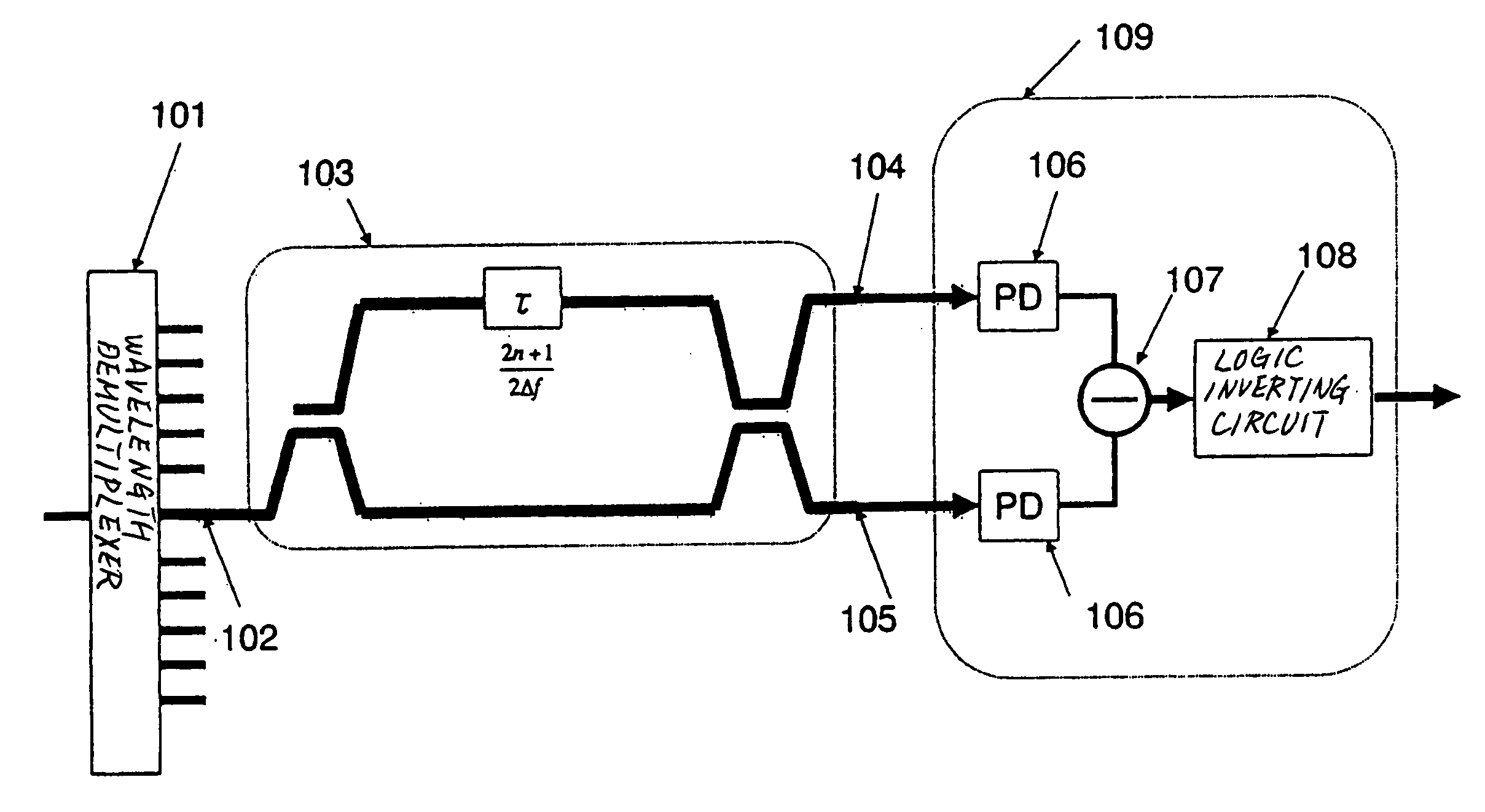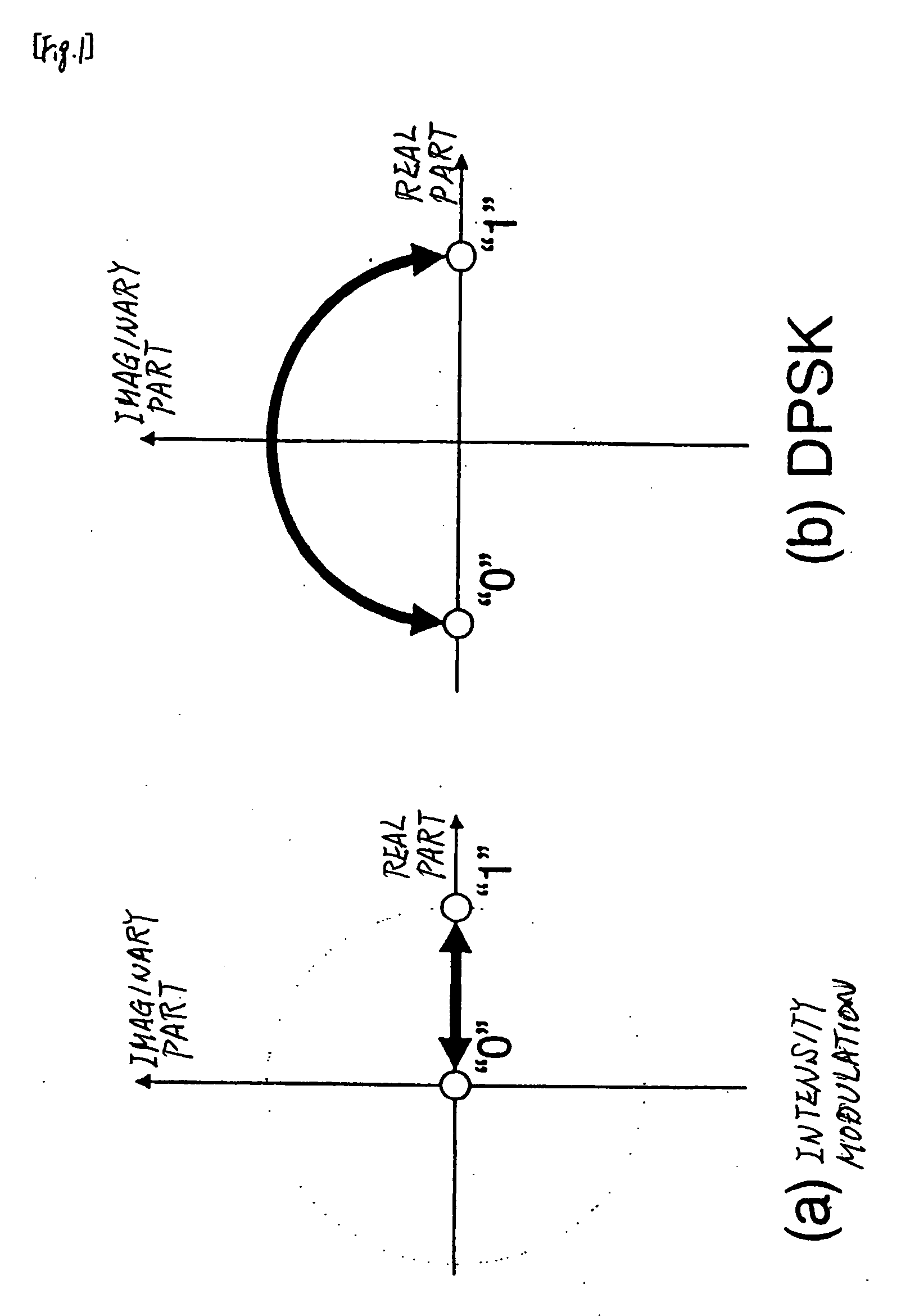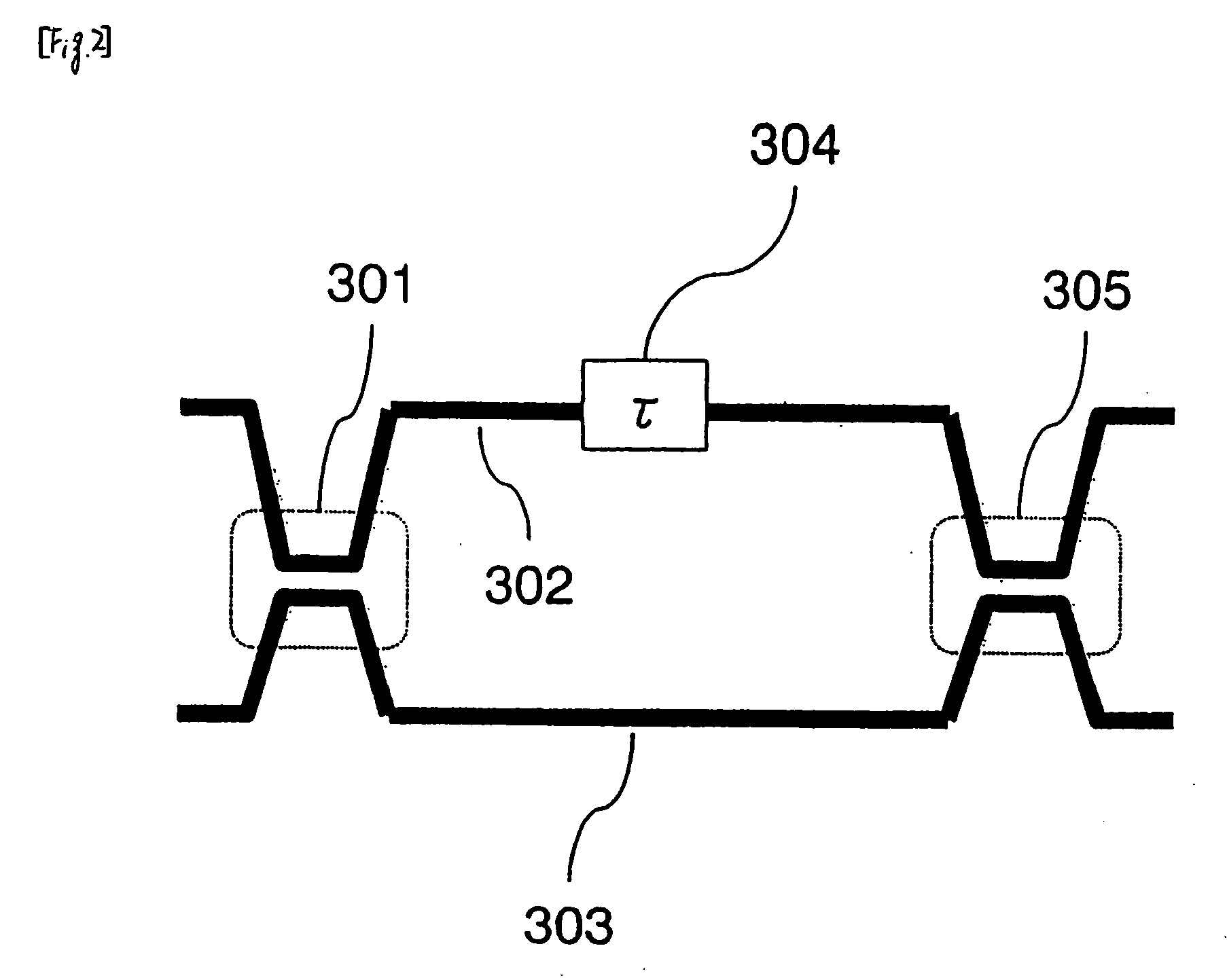Light Receiver, Optical Communication System and Method
a technology of optical communication system and light receiver, applied in the field of light receiver, optical communication system and method, can solve the problems of reducing communication quality, affecting the operation of delay interferometer, and suffering from a large amount of noise, so as to reduce the operating frequency of delay interferometer, eliminate the instabilities caused by an adjustment mechanism, and demodulate the dpsk signal
- Summary
- Abstract
- Description
- Claims
- Application Information
AI Technical Summary
Benefits of technology
Problems solved by technology
Method used
Image
Examples
1st exemplary embodiment
[0075]FIG. 5 is a block diagram showing a configuration of a receiver according to a first exemplary embodiment of the present invention.
[0076]As shown in FIG. 5, the receiver according to the first exemplary embodiment comprises wavelength demultiplexer 101, delay interferometer 103, and light receiver 109. Light receiver 109 comprises light detectors 106, subtractor 107, and logic inverting circuit 108.
[0077]In FIG. 5, for the sake of brevity, delay interferometer 103 and light receiver 109 are connected to an output terminal of wavelength demultiplexer 101. Actually, the receiver has a plurality of delay interferometers 103 and a plurality of light receivers 109, which are connected to respective output terminals of wavelength demultiplexer 101. Delay interferometers 103 and light receivers 109 do not need to be connected to all the output terminals of wavelength demultiplexer 101. Rather, delay interferometers 103 and light receivers 109 may be connected to only output terminals...
PUM
 Login to View More
Login to View More Abstract
Description
Claims
Application Information
 Login to View More
Login to View More - R&D
- Intellectual Property
- Life Sciences
- Materials
- Tech Scout
- Unparalleled Data Quality
- Higher Quality Content
- 60% Fewer Hallucinations
Browse by: Latest US Patents, China's latest patents, Technical Efficacy Thesaurus, Application Domain, Technology Topic, Popular Technical Reports.
© 2025 PatSnap. All rights reserved.Legal|Privacy policy|Modern Slavery Act Transparency Statement|Sitemap|About US| Contact US: help@patsnap.com



